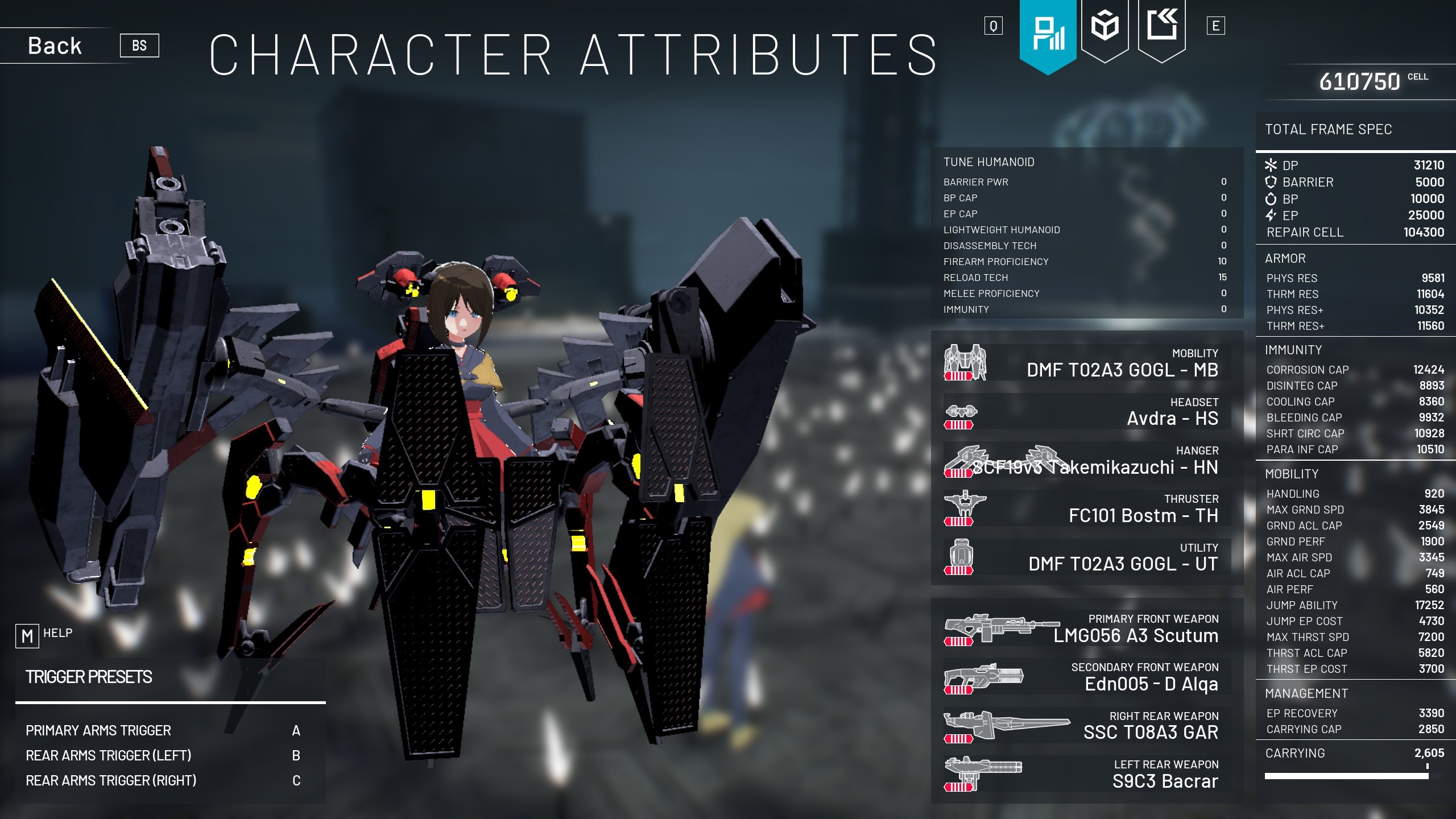
- Details
- Category: Video Games
- Hits: 37
There's this game that I've been playing on and off for about a month called Dolls Nest, developed/published by Nitroplus. I've seen the people in the Steam reviews call it a hybrid between Dark Souls and Armored Core and I think that's a pretty fair assessment. Your character is a customizable humanoid girl that you can outfit with a "frame". Frames consist of several modules such as a mobility unit, thrusters, a head, hangers, a utility module, and then your primary and rear weapons. There's a lot to keep in mind since certain parts might be better suited to a certain playstyle. For example, parts that favor speed and are lightweight are going to have poor defensive stats. The reverse is also true as heavy armor has incredible defensive capabilities but too much might hinder your ability to travel across the different zones. You can also customize your builds with different color schemes and save several presets.
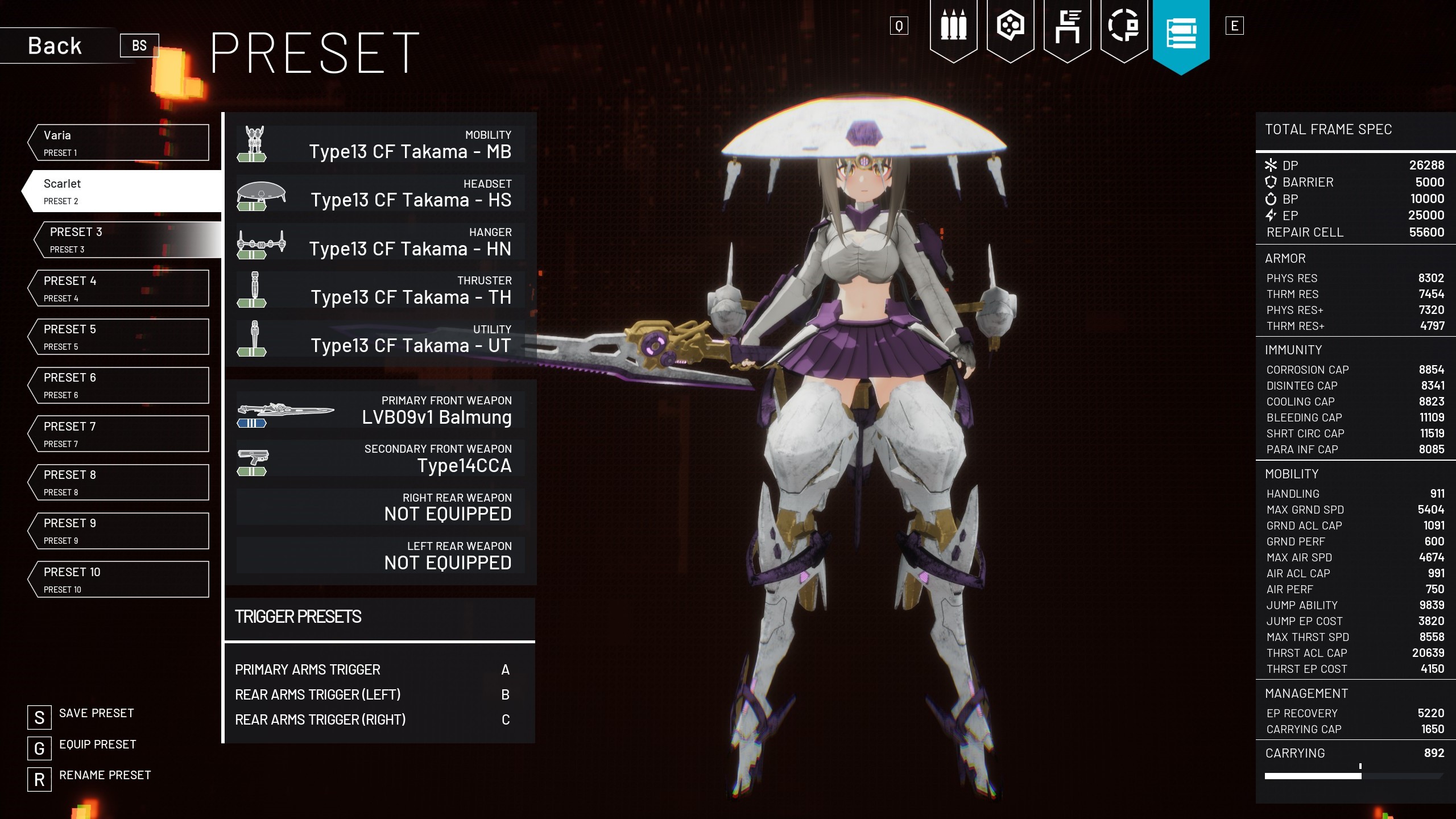
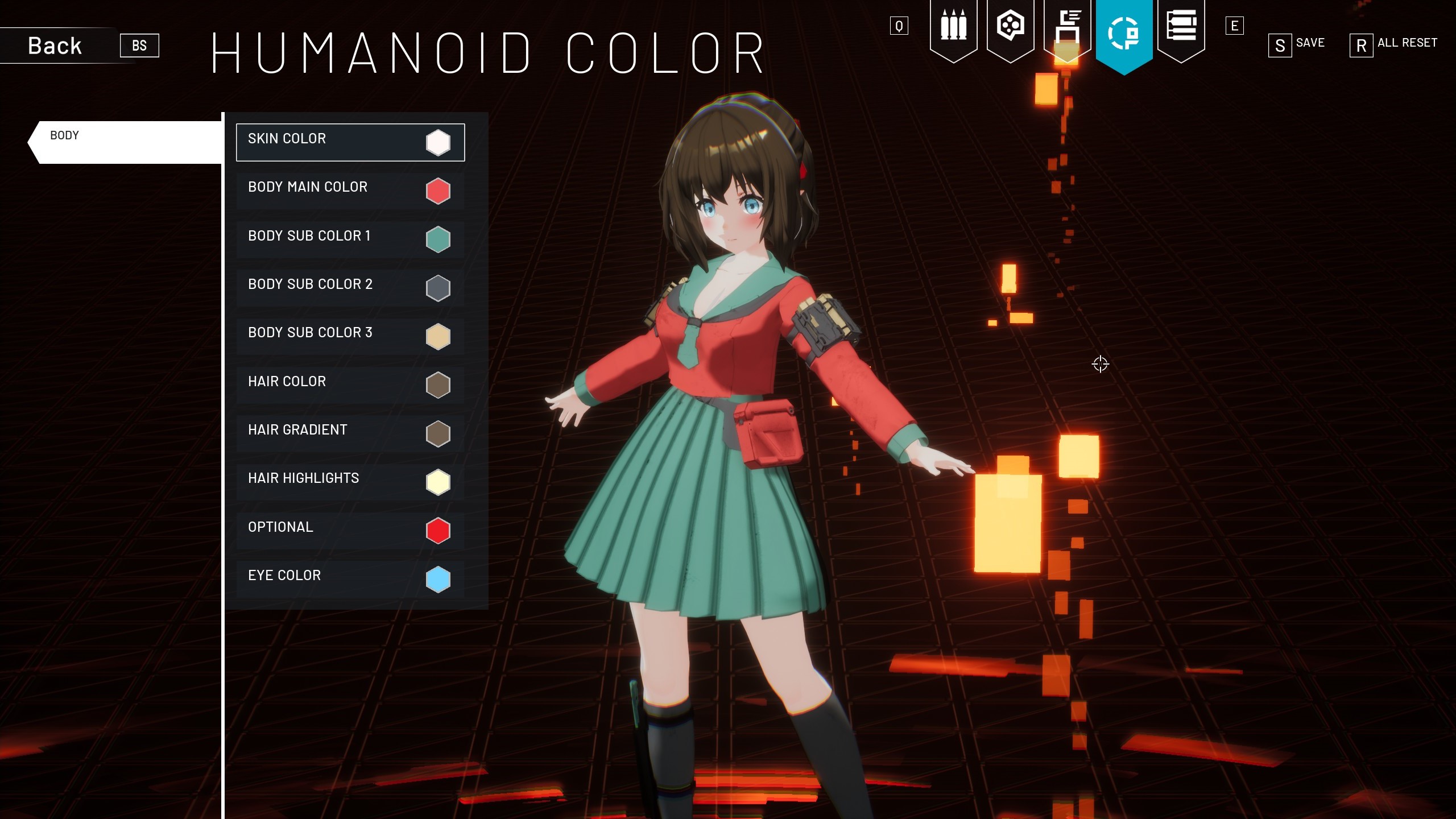
I originally played the demo in February. It covered the tutorial area and featured no boss fight at all. It was definitely tuned to be more of a sandbox experience. It wasn't long before the demo was taken down for reasons. In March, Nitroplus announced that it would release on April 24, 2025. Despite my current backlog, I made time for the game because I thought the concept was interesting.
New Sub-Genre Just Dropped
Dolls Nest exists in sub-genre that I like to call "Automata-core". The automata-core genre is basically any video game with a story where artificial humanoid characters explore themes of existentialism and the human condition. It's possible that these games are lore-heavy, but they do not necessarily have to be. The exploration of the aforementioned themes does not have to be dense, either. I don't think that reading Nietzsche should be a prerequisite to understand the themes that a Automata-core game's story is trying to deliver. That being said, it could certainly help. I'm sure it's possible that people who were familiar with Nietzsche had a more fulfilling experience playing through Nier: Automata because direct references the game has to his work.
And yeah, Nier: Automata is the foundation to the automata-core genre. I'm sure there are other examples before Nier: Automata's time, but it's the game I'm using because a lot of people are familiar with it. Sort of like when people say Metroidvania, that's like two games in one name.
The automata-core subgenre isn't exclusive to video games, though. There have been many movies in the past few decades that are very automata-core, like Ex Machina, and Her. In the case of Her, I know that the female lead in that movie is more like an advanced personal AI assistant. However, while she might be missing the artificial body like the android in Ex Machina, she definitely has a personality that is human-like. And for me, that's enough to include Her in the automata-core subgenre.
If this still doesn't make sense to you, automata-core is essentially just media about androids/robots/AIs having feelings.
actual thoughts about the game's world-building
Back to Dolls Nest.
It was an interesting game because the premise is that your character is the offspring of a larger, more complex humanoid named Nehma that was left in a weakened-state. As you explore, meet NPCs, and read the descriptions of the many items you acquire, certain terms begin to make themselves more apparent.
Your character, along with the other humanoid characters that you encountered are called Nymphs.
Hod is the name of the massive crater that the game takes place in, it has many levels.
Anyway, there's a decent amount of world building that happens in Dolls Nest. So much, in fact, that I feel like the developers wanted to do more and couldn't.
When the player talks to Nehma in the Decaying Broodchamber (hub area), they can ask her about certain topics like factions, the different levels of Hod, and other in-world topics. While convenient, I don't think this style of storytelling is satisfying to me because it kills a lot of the mystique surrounding this world that I've been thrown into. It's also hard to criticize because a lot of the information Nehma provides doesn't affect the player directly. We're the newest nymph on the block and of course we have questions about this world we were brought into, but the world is also kinda ... over?
The Nymphs have their own societies too. They had wars, conflicts, betrayed each other, just like humans.
the vibe of Dolls Nest
There's mention of several colonies throughout Hod and other queens, but all we see throughout the game are ruins of a society that was highly dependent on machinery. Canonically, the humans that lived in Hod have gone extinct. The nymphs and machines took over once they died out.
That loneliness is represented pretty well in the game's several zones.
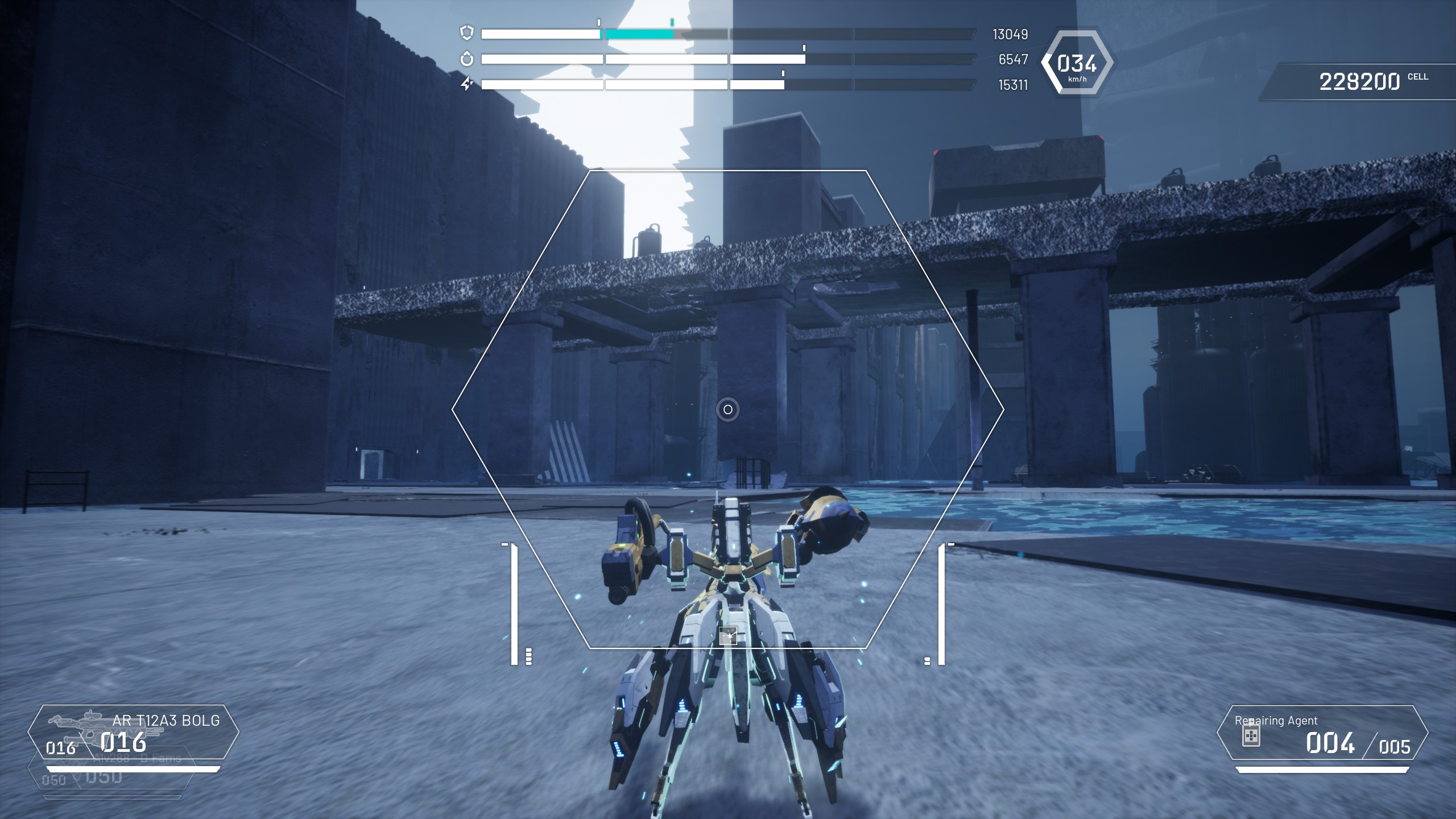
Between the skirmishes with enemies, sometimes the only sounds you can hear are the hum of your mobility unit carrying you to your next destination and the ambient noise. It's usually during those moments that I take in the scenery. Maybe I can see some enemies in the distance, but they're so far away that I don't spare them a thought. It's hard to believe that Hod was inhabited. I would think about the amount of people that had to be living in Hod to even justify the need to build things like a water treatment plant that's the size of a city. It reminds me a lot of that trend from a few years ago, liminal spaces. Exploring the different zones felt like that, often.
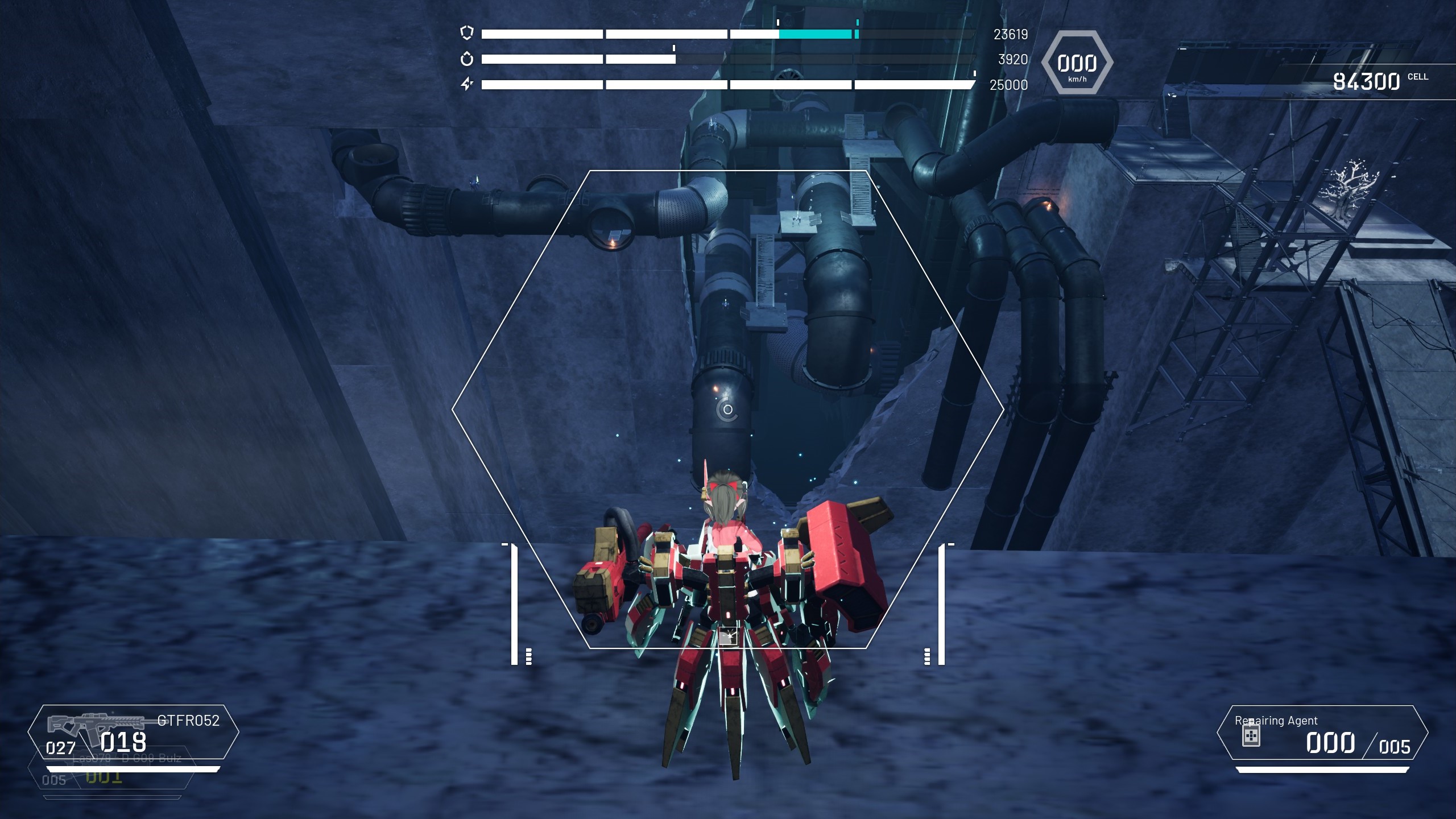
At least, the zones would do that really cool Souls game thing where you unlock a shortcut and loopback around to a resting spot. That feeling never gets old for me. I think overall, the draw of Dolls Nest for me was equal part exploration and the customization of our characters and frames. And I'm glad! Because I personally feel like it falls short in terms of gameplay.
actual thoughts on the gameplay (it's okay 5/10)
The gameplay loop is pretty basic. You explore a zone, defeat a boss, unlock a new resting spot and repeat. The bosses themselves aren't difficult at all if you've ever played an action video game before. A lot of them repeat a couple of basic attacks and maybe a flashy attack on loop until you defeat them. Honestly, there was a bit of an initial challenge going in blind. My primary weapons were mainly assault rifles, which got the job done, with a couple of artillery options as my rear weapons.
Resource management is a very important aspect of this game, but I don't think the weapons were balanced well enough for that to matter. On the HUD, the bar in the middle represents "BP", otherwise known as your ammo. Every time you reload or use a rear weapon, you consume BP according to the cost per round. If you reload, I believe that all the ammo in the magazine is taken from your total BP. In the case of rear weapons, you lose BP immediately after every shot of artillery or missiles.
You can only replenish BP when you're at a resting spot or if you use the "Supplement" consumable item, which partially restores a total of your BP. Even then, the amount of supplements you can carry is capped.
Ideally, this system would push me to think more critically about the weapons that I want to use. Running out of ammo in the middle of a zone with no option to teleport back to the last resting area really sucks. The hunter becomes the hunted and you're suddenly trying to maneuver your way back to safety. Unfortunately, this wonderful concept is completely negated by how cheap and powerful SMGs are. Sure, they're attack power drops significantly starting at mid-range, but the benefits are way too good. SMGs can melt just about any enemy. In the late-game, you might find yourself using up an entire magazine to kill an enemy but with how little resources they use up and the time it takes to reload, SMGs are really hard to beat.
It doesn't help that a lot of common enemies (and even bosses) are just stupid. Many enemies will "overheat" after attacking you once. They'll throw a whole barrage of bullets towards you and then take a century to reload. You can use this time to get away or maneuver behind them and just unload your entire mag at their weak spot. Like I said earlier, the combat isn't difficult.
There are some enemy placements that are very "troll-y", like self-destructing enemies that fall down from a ceiling, enemies hidden in the foliage, things like that.
Even this won't really present itself as a challenge if you're careful.

All to really say that the combat is kinda average and doesn't pose a challenge. And just to be clear, I only started to use the SMG late in the game. Most of the game I was several combinations of primary weapons, I even went pure melee too. Melee is satisfying in it's own way, but having a cooldown per swing is very annoying. This is remedied by having two melee weapons as your primary, but then your ranged options are limited or non-existent if you value your mobility.
music
One final stray thought about Dolls' Nest. While many of the tracks feel inspired by the Nier series, several of them are able to stand on their own. The track below is a boss theme and also plays in the Steam trailer. I'm glad Nitroplus decided to used this track for the trailer because it has a lot of personality. It's chaotic, the vocals have that android feel, yet sound chaotic.
other thoughts
Coincidentally, Nitroplus is the developer of Full Metal Daemon Muramasa and other cool visual novels. There's actually a crossover content planned in a future update where one of the frames available will resemble Muramasa in her tsurugi form.
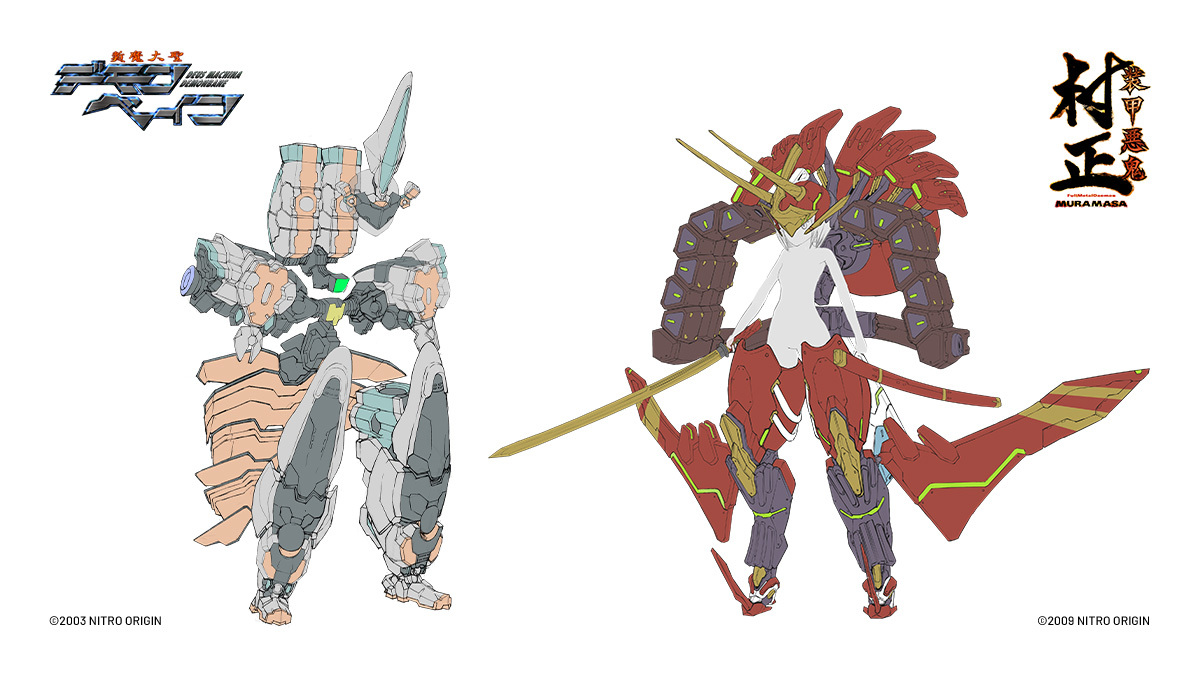
I might boot the game up again to check it out. To be totally honest, one of the only reasons I bought Dolls' Nest was to fund the next installment of Muramasa, Project Vermillion. I hope they can see that there's some interest in the series. I actually never heard of Nitroplus developing a game that isn't a visual novel ... Wait, nevermind, how could I forget about Nitroplus's other major release this spring, RUSTY RABBIT?
That's the second time I get whiplash from hearing Kiryu Kazuma's voice actor in something else other than the Yakuza series. The other time I recognized his voice when I was fighting a boss in Atelier Yumia, which released the other month as well. I hope he's been doing well. But yeah, Nitroplus is exploring new territory with these games. People might point out that they have collaborated with other companies and groups in the development of other games, but this is different. Both Dolls Nest and Rusty Rabbit are 100% in-house projects. It's really cool to me that they're trying out different things. Dolls Nest is very rough around the edges. Honestly, it feels a lot like an indie game with the amount of jank it has and the amount of times the game crashed on me. I really hope we're in Nitroplus's training arc right now. They've got some interesting ideas, some talented writers, but I'm expecting there to be a lot of growing pains as they move away from making the visual novels that everyone knows them for.

- Details
- Category: Video Games
- Hits: 60
Around 15 years ago, when I was still in high school, I stumbled upon fan art of a character named Sansei Muramasa (see below) when I was browsing newly uploaded illustrations on Pixiv. There was a lot about the character I really liked, so I decided to look up the source material thinking she was from an anime or manga. Back then, I was really disappointed to learn that Muramasa was from a visual novel named Soukou Akki Muramasa, or Full Metal Daemon Muramasa as it's called in English.
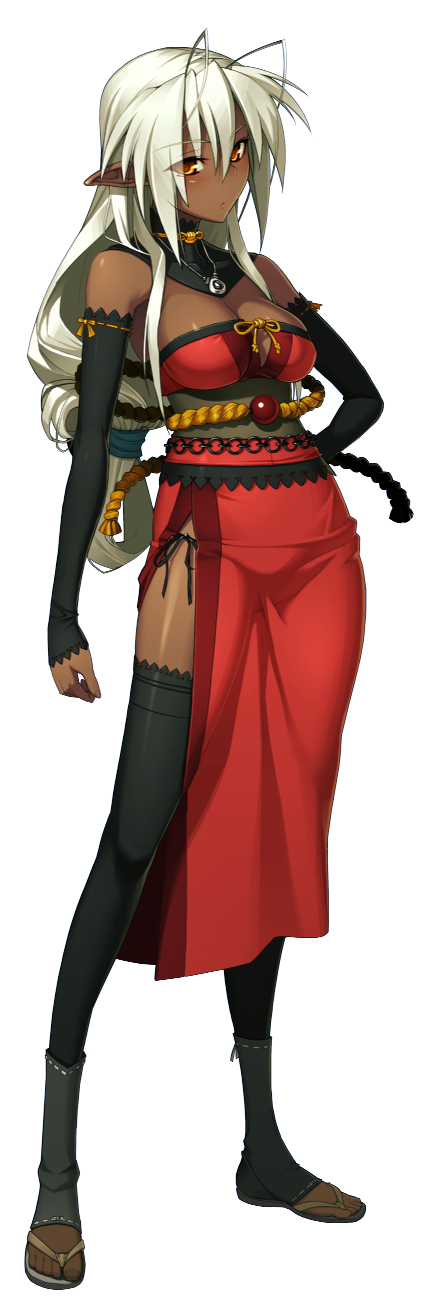
Worst of all, there was no hint of an official translation coming anytime soon. And it actually wasn't available until 2021! There was a considerable amount of time between the time I first found out about this visual novel and when I actually got to read it. I'm not sure how much of an impact it would've had on me if I read it in my adolescence, but after spending around 80 hours with Full Metal Daemon Muramasa, I can say that it's a story that will stick with me for the rest of my life.
When I originally found Muramasa on the Visual Novel Database and looked up opinions for the visual novel on various forums, the people who were able to read it mentioned the story was very dark and also praised it as a piece of literature. I also remember hearing how it was challenging for those who were learning Japanese because it was very dense.
If you'd like a sense of how long the Full Metal Daemon Muramasa is, according to JPDB.io it has a total word count of 563,594. For comparison, the total word count for all 37 of Shakespeare's plays is 835,997. I'm actually pretty proud of myself for reading that much!
I wanted to write down my thoughts about this incredible visual novel because it took so long to finish. It's really important for me to write down my impressions while the story is fresh in my head.
Story
This is not a story of heroes. Since time immemorial, warriors called musha have ruled the battlefield, granted supernatural power by their enchanted suits of armor - tsurugi. Minato Kageaki is one such musha, driven by duty to don his crimson armor and challenge the greatest evils of an age. But though madmen and tyrants fall to his blade, never will he claim that his battle is right. For the tsurugi he wields is cursed Muramasa, which five centuries ago brought ruin to the land, and innocent blood is the price it demands in exchange for its terrible might. "Where there are demons, I slay them. Where there are saints, I slay them." These words are an oath, the unbreakable Law binding him to his armor. But they also tell the story of his past, and of the future to come.
- Description for Full Metal Daemon Muramasa from JAST USA
Setting and Introduction to Yamato
The description does a really good job of giving you a general primer of the world of Muramasa. The visual novel takes place in an alternate version of our world in the 1940s around the end of World War II. In this version of our world, Britain has successfully expanded their influence across the globe. The American revolution failed and subsequent attempts (about 4) were successfully quelled. Instead of Japan, the country is called Yamato. Yamato kept it's "warring states" style of government that includes the emperor and the shogunate that ended in the late 1800s in our world. Muramasa takes place during the Allied occupation of Yamato that began about six years before the story began. The Allies, also known as GHQ, fought a decisive battle that ended with Yamato surrendering in exchange for keeping its sovereignty. This is important because while GHQ's goal is conquest, they also want to have a stable country that can work as a deterrent against Russia. Russia is GHQ's biggest rival and is also attempting to spread its influence along with communism.
Yamato is a very important piece for both Russia and GHQ since whoever holds it controls access into Asia.
The first chapter is really interesting because you play as a different protagonist. This protagonist is a high school student which gives the writer a perfect excuse to info dump as much as they want under the pretext of it being classroom material. And it works! I'm actually someone who really loves learning about the little details of the world I'm about to sink my teeth into. I don't typically mind infodumps that much since I'm used to spending hours on Wikipedia. Some of the opinions that I read after I beat Muramasa say that the infodumping was overwhelming and at times it felt like information overload. I don't agree because I think every time there was exposition, it was done tastefully or it fit the context of the scene.
The first chapter immediately subverts your expectations but also is a great way to learn about the daily lives of the people who live in Yamato. While GHQ allowed Yamato to keep its sovereignty, the Rokuhara shogunate is tyrannical, and public opinion of them is very low. The people go hungry, crime runs rampant, and many face financial hardship. When I read through the first chapter, I was very confused as to why I wasn't playing as the main protagonist right off the bat. However, the exposition was interesting enough to keep me entertained through the chapter. The chapter centers around Yuhi Nitta and his friends investigating the disappearance of their friend. They're all childhood friends and are in the same class, so not hearing from their friend for several days is an immediate red flag for them.
I was really into this chapter! I'm a fan of detective novels and have read a fair amount, so it was very entertaining for me to read as the investigation progressed. Later on, the story centers around a race track for an entire chapter and it tends to feel like a sports drama at times. I just realized this, but I really enjoyed how diverse the chapters were in this regard. We even managed to get a bit of a "beach episode" in the chapter 4. The tone of the story stayed somewhat consistent with brief moments of comedic relief to ease the tension throughout. I don't think I was ever bored enough to skip dialogue. If it looked like I skipped, I was probably trying to read very fast because I wanted to know where the story was going!
Quirky Style of Writing
There are also various action scenes in Muramasa between the musha who battle in their tsurugi. This is where a lot of the "infodump" criticisms were directed towards. The writer, Ittetsu Narahara, is a very mysterious guy. He no longer works at Nitroplus, but when he did, he had written one other visual novel before Muramasa. It also featured a lot of sword fighting between the main characters. I read somewhere that after Ittetsu Narahara left Nitroplus, he went on to practice his swordsmanship and dedicates himself to that now. Like, no one has seen or heard of the guy at all. He just dropped the most insane piece of Japanese literature and just disappeared.
Back to the point, Ittetsu has a habit of explaining the concepts behind Japanese swordsmanship during the action scenes. Most of the time visual aids are also included. I don't hate this, but a lot of people think it killed the pacing. Again, I don't agree, but I see how someone wouldn't want to read about the pros and cons of the protagonist's upcoming attack for the next 10 minutes.
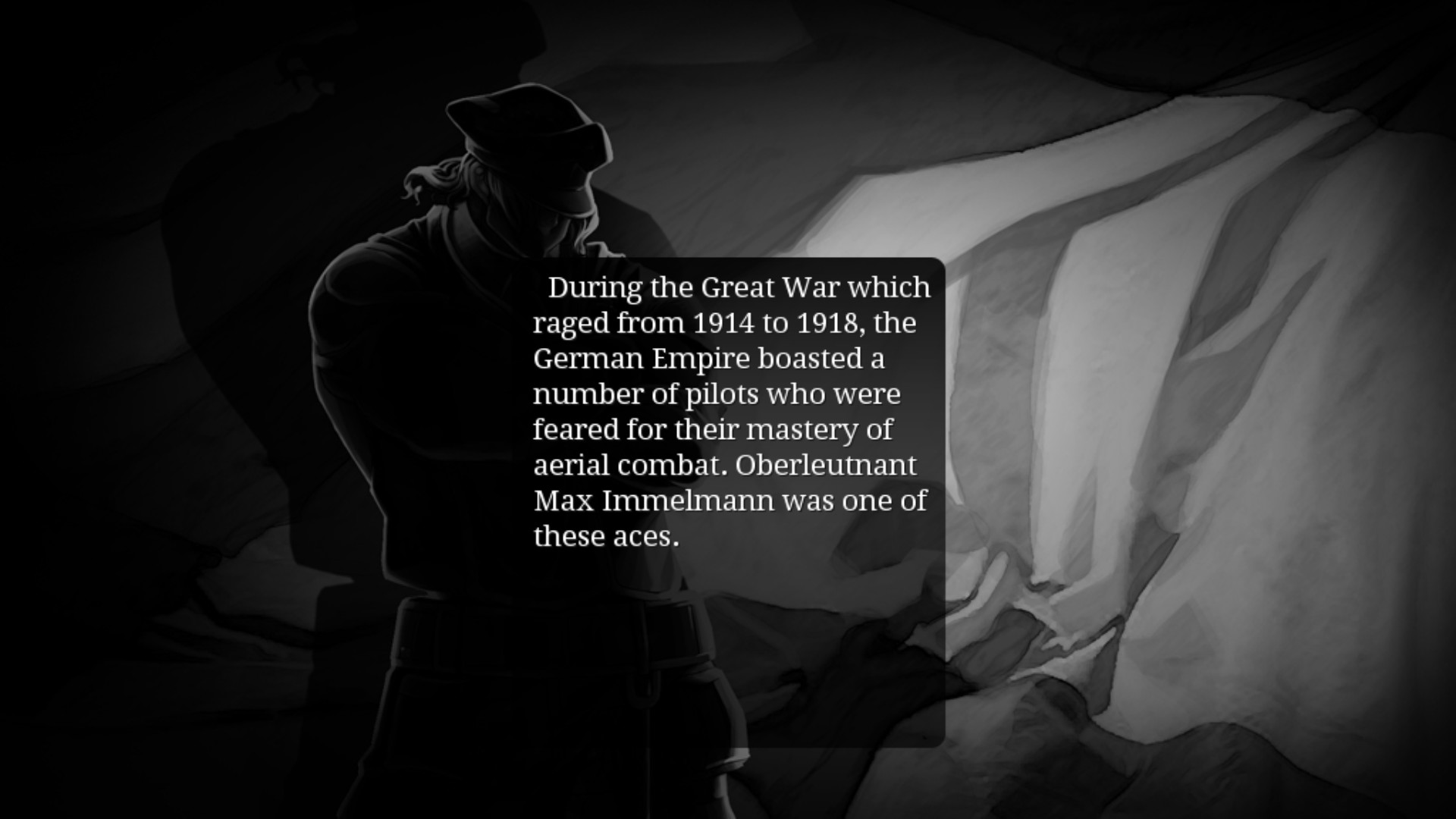
I actually wish I had taken more screenshots for the combat scenes, but I think I was incredibly immersed. It's the type of stuff my brain locks in on and just absorbs. Like, I can tell you right now that Jodan position is the default style that musha carry their swords, which is with the blade close to their shoulder. HOWEVER, when a person takes the Jodan position without a tsurugi, it's traditionally with the sword over the head with the blade facing forward. Details like these were repeated often and were a regular part of the combat scenes. A major reason why I enjoyed Ittetsu's explanations is because he actually knows what he's talking about. You can sense the writer's interest in the subject of swordsmanship in many of the difficult situations that Minato Kageaki finds himself in. You get a taste of how someone who is knowledgeable about swordsmanship would approach a situation. And I think it's one of the unique aspects about Muramasa. Never did I feel like the information was useless. It created tension and made every move that was done in combat, intentional. I wasn't just imagining two dudes samurai mecha just swinging their swords randomly.
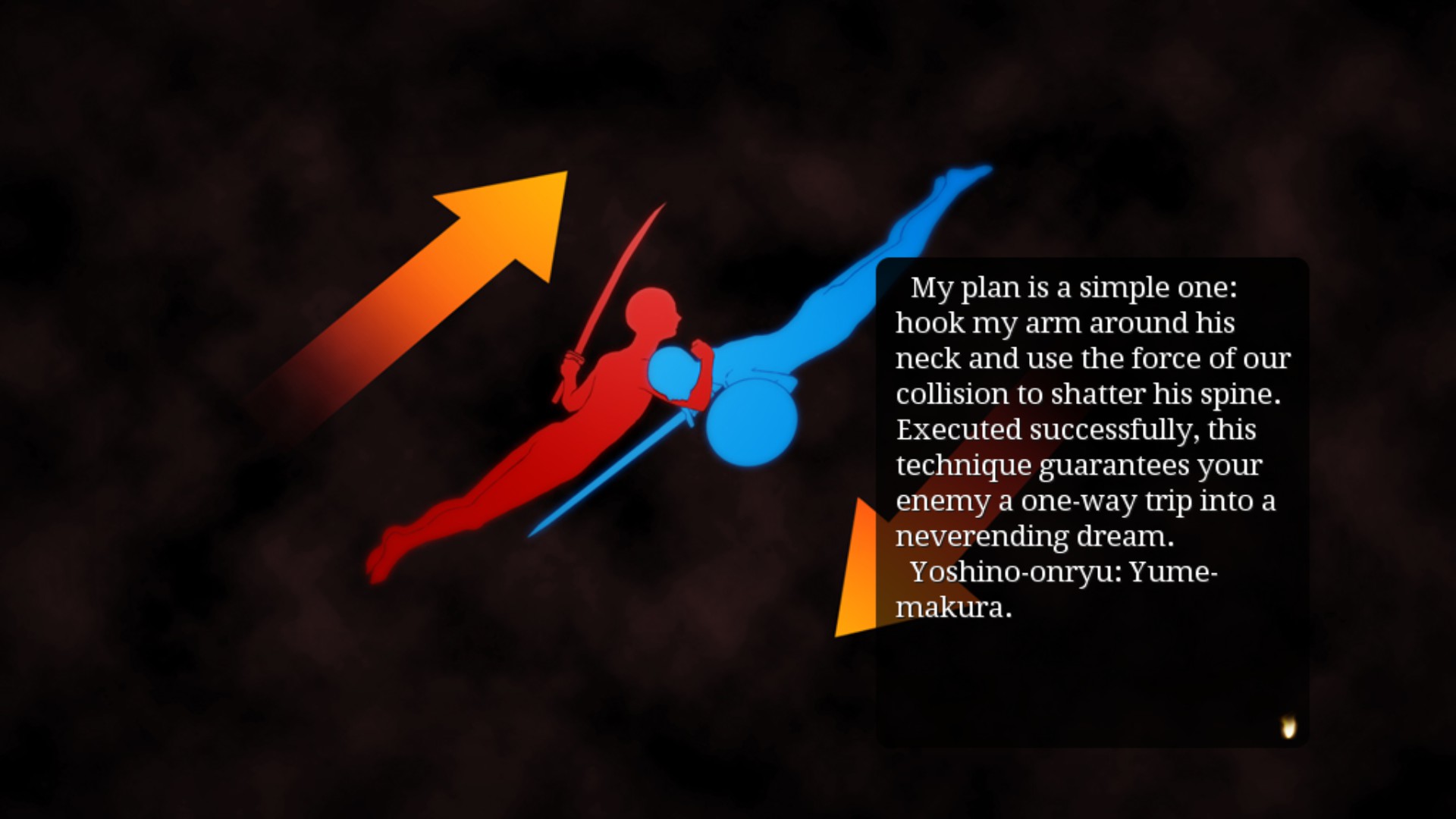
One of the reasons why Muramasa took about 80 hours to finish was because of the multiple endings. The visual novel has about 5 endings, at least one for each of the love interests. In each of the routes, Kageaki also copes with Muramasa's curse in a different way.
For every enemy that Kageaki kills, he has to kill a friend or ally as well. In one route, his love interest wants to protect him from the curse, so she does the killing for him. In another route, Kageaki wants to atone for all the innocent lives he's taken with Muramasa's curse and desperately seeks someone that can end his life for the sake of justice.
Kageaki's personal philiosophy shifts depending on the ending, but none, except the true ending, allow him to accept himself for who he is. Every ending off-loads Kageaki's trauma onto his love interest and I think that's why none, except the final (true) route has a satisfying ending.
Story Theme and Philosophy
After thinking about it for a while, I think the major theme of Full Metal Daemon Muramasa is that we, as people, delude ourselves into justifying harm unto others. I think it's a very controversial thing to say nowadays in the United States. I think a view point like that might come off as centrist or you might be misunderstood as a right-wing apologist.
I've often heard people speak of the cliche in media where the hero spares the villain because otherwise they'll be no better than them. Honestly, I think we need to bring this back because I find it disgusting that something like restraint considered lame. God forbid we look at the bigger picture or develop a sense of empathy.
I've never felt comfortable hoping people die, no matter how messed up they are. I realize this view point can be flawed. From a utilitarian aspect, it's better to remove one person who is causing harm to many for the "greater good". Who will be the one to remove them, though? And how do they justify taking a human life? Will they be able to live with themselves afterwards? What lies have they told themselves, what lies have their neighbors told them so they can feel better about taking another human life?
Muramasa also reminds me of something Yoko Taro, the video game director responsible for Drakengard and Nier, said during a promotional video before the release of Drakenguard 3. It's a quote that has stuck with me for many years.
You don't have to be insane to kill someone. You just have to think you're right.
I think Muramasa's story did an incredible job at antagonizing a concept like "justice" that is widely accepted as good and virtuous. Just like the Yoko Taro quote above, I realized over the course of the story that someone's act of justice can perpetuate a never-ending cycle of violence.
Other Thoughts
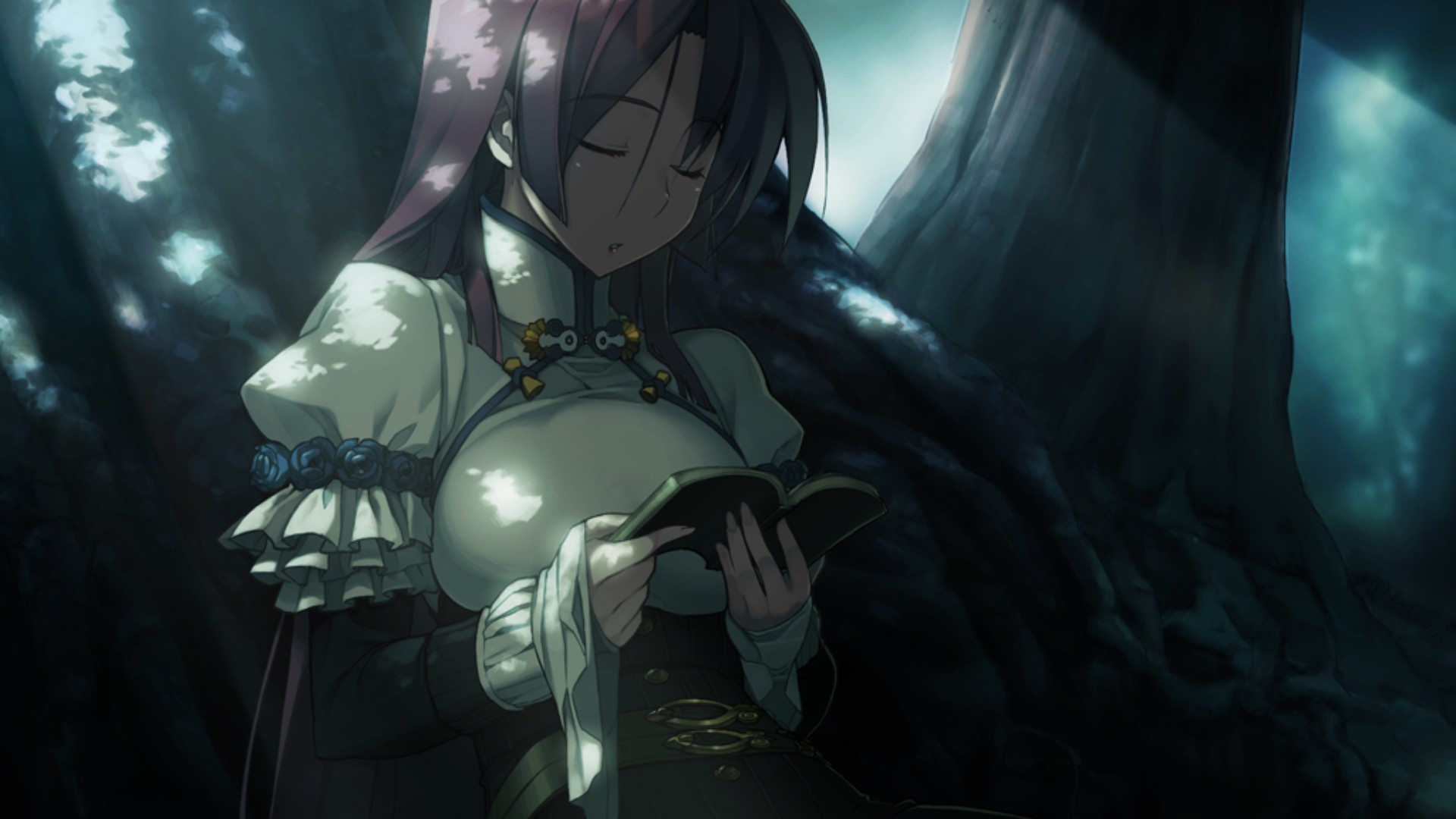
I've been working on this post on and off for a couple of days now. I don't think I intended this to be a review, it's more of a mixed salad of thoughts and ideas from the story that I wanted to talk about.
Full Metal Daemon Muramasa is a visual novel that is going to stick with me for a while. Even though I had an amazing time with it, I don't think I'd recommend it to everyone. There's a lot of trauma, sexual assault, and implied sexual intercourse between certain characters of the same family. However, there are a lot of comedic and genuine scenes in the story as well. The voice actors poured their heart and soul into every line of this visual novel. If I haven't mentioned it already, the VN is fully voiced and I love it so much for more that. These characters all came to life for me and I was able to experience their personal histories and watched them overcome obstacles or fall deeper into despair.
The late David Lynch, one of my favorite filmmakers, always enjoyed exploring human vulnerability. He really enjoyed putting a spotlight on the negative emotions that gives people their unique flaws. He caught a lot of ire back in the day when he made the Twin Peaks movie Fire Walk With Me. According to interviews, the film wanted to explore the tragedy of Laura Palmer, the young woman who was sexually abused and murdered in Twin Peaks, during the last few days of her life before she was killed.
Many at first thought the film was done in poor taste or for shock value. Nowadays, there are people who have overcome their initial impressions and truly see what the movie was about. I won't deny that watching a movie or reading a story about these kinds of topics is easy. And I don't think they should be easily dismissed as media created for self-indulgence, either.
Muramasa's has erotic scenes that are in both camps. While many of these scenes with the few love interests are more on the self-indulgent side, there are a couple that are used to really show how depraved and devoid of empathy certain characters are. It's a bit of a mixed bag. I think in the future I'll write about this one time in college where a professor asked my entire class where the sex was in our design documents for a video game writing class. It left a huge impression on me.
I don't really see it as something "horny", but I realize that a lot of people today are scared to love, feel emotion, or be human (including myself). I want to say that it's okay to feel these things and to not feel ashamed. And I want to say that sometimes people are taken advantage of and harmed, but their stories should also be told so others who have experienced similar situations know that they're not alone.
Sequel
Now, did you know that Full Metal Daemon Muramasa has a sequel planned? I finally get to join thousands of others in the Project Vermilion waiting room! People have been waiting for the sequel for YEARS. However, there's not a lot of hope for it since news is scarce and the original writer for Full Metal Daemon Muramasa left Nitroplus. One can only dream ...
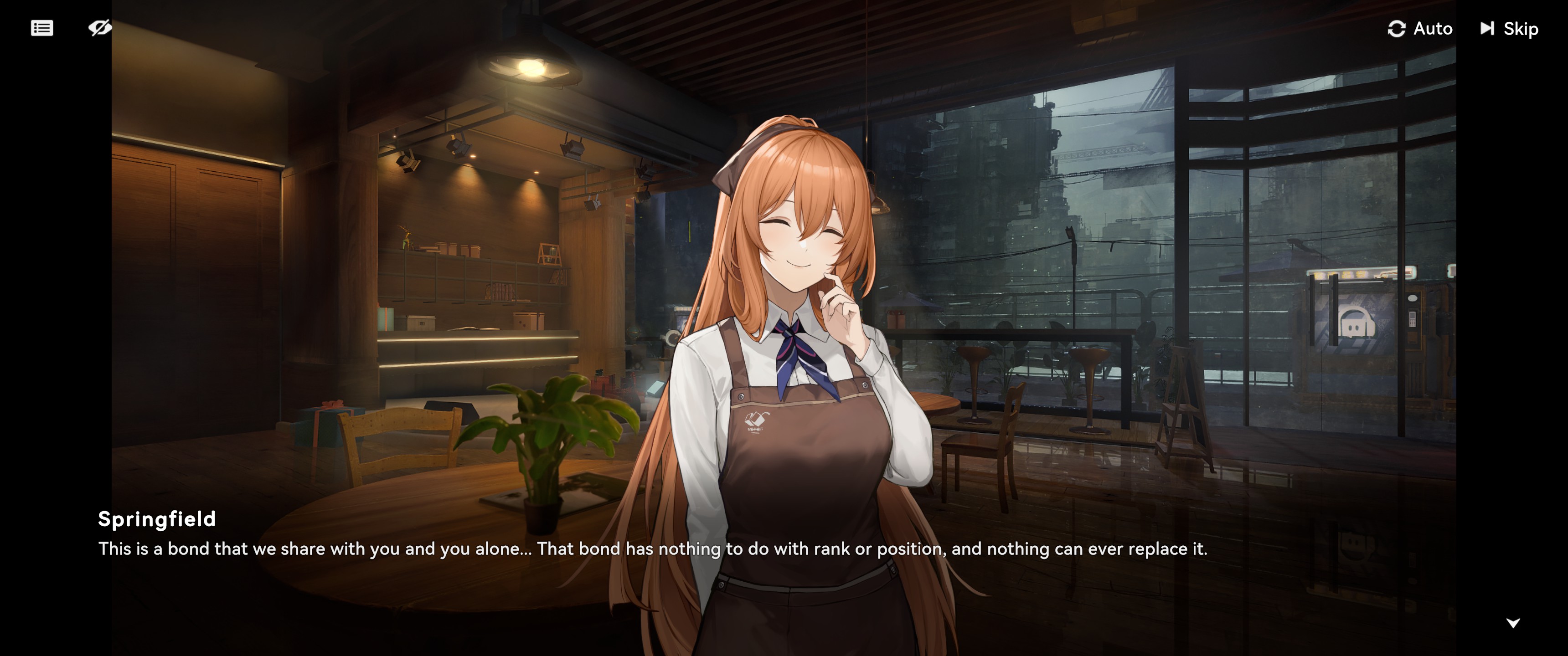
- Details
- Category: Video Games
- Hits: 65
It's Saturday evening as I'm writing this. I woke up with an extremely sore shoulder this morning which limited the physical activity I could do today. Not a huge problem since Saturdays are typically my lazy days unless there's somewhere I want to do. Anyway, I decided to boot up Girls' Frontline 2: Exilium and play the new event centered around the character Centaureissi (G36).

Despite not playing the original Girls' Frontline as much as some of the veteran fans have, I couldn't help but feel nostalgic when reading through the event's story. The event stories in GFL2's global release fill in the narrative gaps in the main campaign. At this point in the campaign our character, the ex-commander of a PMC, is following the trail of an evil organization they failed to eradicate completely 10 years prior. On top of that, they left their former position at G&K, the PMC they worked as part of an agreement that allowed the tactical dolls (or T-Dolls), such as Centaureissi, to live as individuals and not mere tools.
It has been 10 years since the commander self-exiled themselves and they have been reluctant to contact any of his former subordinates. The last few events in the global version in Girls' Frontline 2 have focused on some of the former G&K T-Dolls rushing to the commander's aid during a specific part of the main campaign. Pleasantries are very short since they usually arrive mid-combat, but the T-Dolls have the same respect and fondness for their commander even after an entire decade has passed.

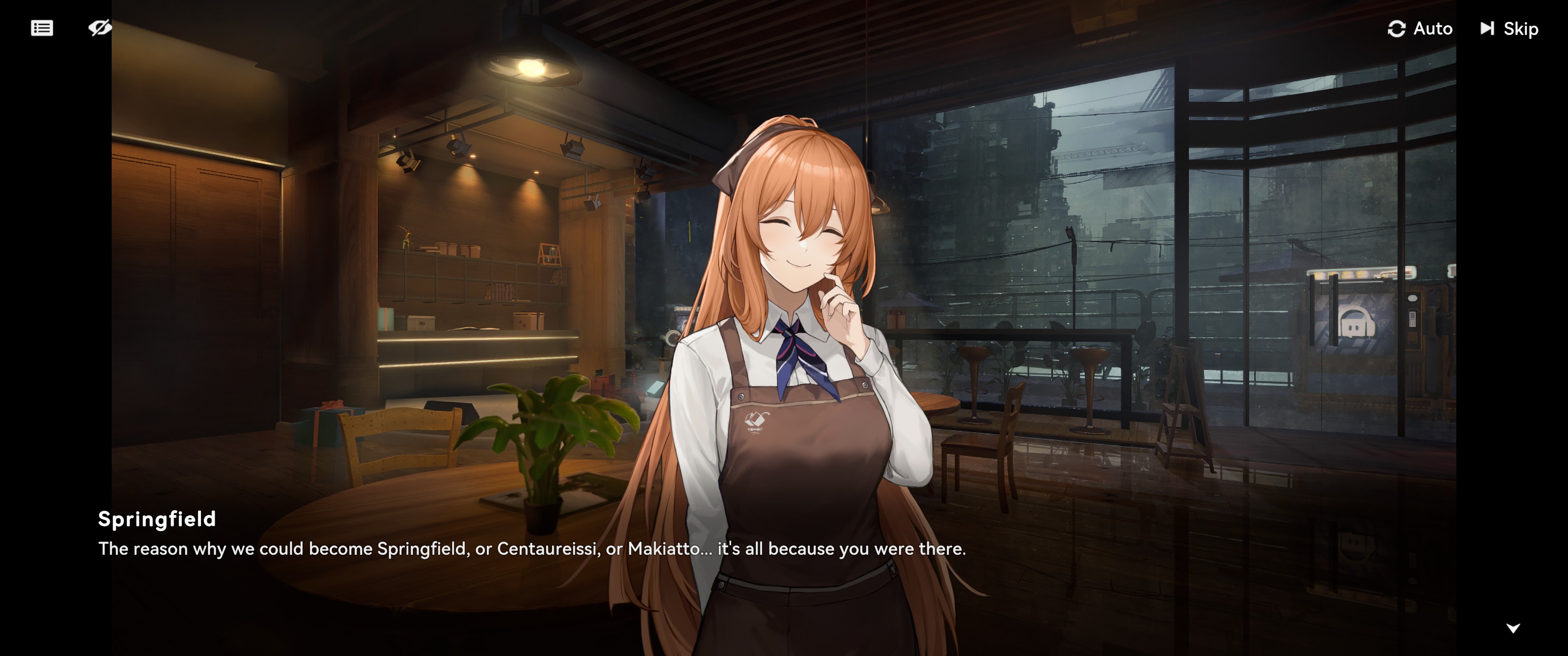
As I was wrapping up the event story, I couldn't help but feel nostalgic when the commander's former subordinates began to reunite. I was especially empathetic to the commander's situation. In a way, I also knew how it felt to lose the private army seemingly overnight.
Metal Gear Solid: Peace Walker is a very unique game in the franchise. It's set about 10 years after the ending of Metal Gear Solid 3. Big Boss has left FOXHOUND and started his own PMC (Private Military Company). In the opening sequence, Big Boss is personally training a handful of soldiers during a heavy storm on a beach in South America. They're right outside the company HQ, a small wooden shack when Kazuhira Miller, Big Boss's second-in-command, informs him of a guest that's arrived. The game kicks off with Big Boss receiving a contract that pays generously. Up front, the PMC receives an abandoned research platform off the coast of the Caribbean to use as their new HQ.
Over the game, Big Boss can capture enemy soldiers during missions and they can be interrogated and convinced to join your PMC. You can also receive recruits as you successfully accomplish missions. The reason being that your successful exploits against the CIA attracts the attention of soldiers wanting to fight for the legendary Big Boss. As you befriend local revolutionary fighters from Nicaragua, scientists, and other essential personnel, your base grows and it kind of feels like you're building a home.
Many players who have poured hours into MGS:PW might have a beloved soldier that stuck out as their favorite. It might even be their best one. The code names for soldiers were randomly generated from a list of animals. For example, Boa, Gorilla, etc. You could even use these soldiers instead of Snake/Big Boss for most missions. My best soldier was Raccoon Dog, she had maximum stats and made the game very easy to play eventually, lol.
The video above is from Metal Gear Solid: Ground Zeroes. It was more or less a prologue/tech-demo that was released in anticipation of Metal Gear Solid V: The Phantom Pain. Ground Zeroes only had a single story mission and the video above is the final cutscene from the game. When I first saw it, I was absolutely crushed. I assume many Metal Gear fans who pours hundreds of hours into Peace Walker felt the same way. Mother Base, the research facility in the Caribbean that grew and became home to your soldiers in the previous game, is under attack by a paramilitary group called XOF. The cutscene is not pretty and it still cuts pretty deep.
RIP Racoon Dog.
Nine years later, you begin to rebuild your base again in MGSV. Honestly, the second time around wasn't as interesting. Peace Walker had a lot more interactions between characters in the form of secret tapes that you could unlock. One that comes to mind is Big Boss's rant about Santa Claus being real. Or Kazuhira Miller getting in trouble for being a womanizer. MGSV is a game about revenge and I think Kojima wanted to make sure that point was clear.
I've always been drawn to this type of storytelling/gameplay combination. It actually is what motivated me to lead a Free Company (guild) in Final Fantasy XIV for a few years. However, like Big Boss, I lost half of my members seemingly overnight when they decided to split up the servers into a new data center. Many of my members did not want to be in the "casual/RP" servers and transferred to the one that had the "raiding" servers. After that, I didn't have the motivation to lead anymore and I slowly let what remained of the group die.It's really hard to lose a second family like that in a blink of an eye!
I think that's why I really enjoyed the event in Girls' Frontline 2. Even though the commander lost a lot of friends, eventually they came back. Or they still remember them fondly. It's the good ending that I wish I had gotten all those years back, haha.

- Details
- Category: Video Games
- Hits: 39
I just finished the GFL2 Aphelion event story as of an hour ago. Since I talked about another GFL2 event earlier in the year, I figured I'd do it again. I missed out on the Centauressi event in March (I think), so I have a bit of a gap in the event stories. Aside from that, I've been pretty consistent. GFL2 is not my main game so it's taken me a bit of time to finish. My main game is NIKKE and I can typically get away with doing daillies at work. However, I do a lot of events at home on my PC. As I've said many times over the last few posts, March/April has been really busy so I missed out on the last couple of banners. I'll have to pick up 416/Klukai at another time. I'm glad the events last the entire month, though! Since I'm working on a visual novel, I'm interested in learning what I can about storytelling from games I already like to play.
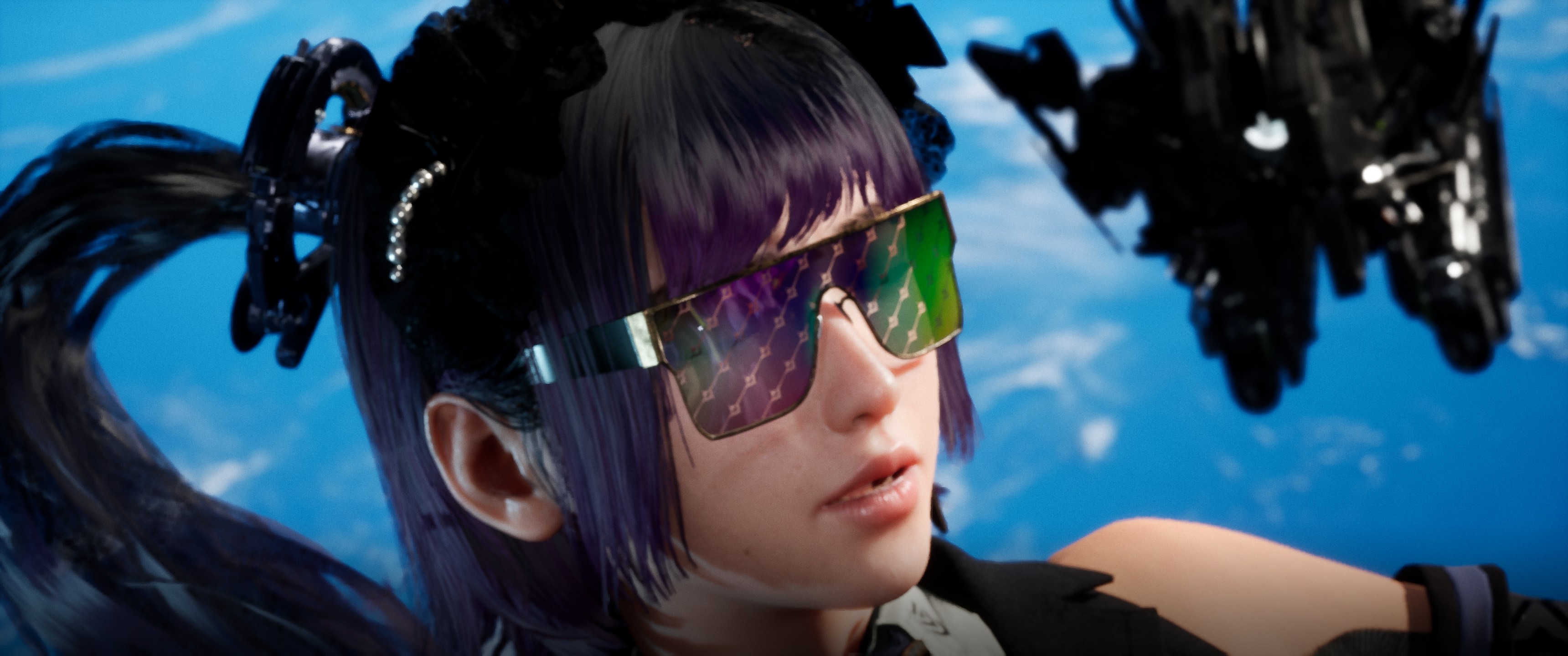
- Details
- Category: Video Games
- Hits: 30
I'll be honest, I wasn't expecting to enjoy Stellar Blade as much as I did. Last November, Shaun, a YouTuber who I've been following a very long time released a video called: Stellar Blade: The Fake Outrage. I'm re-watching is as I write this post, but it was mainly about how Mark Kern (it's really hard to describe who he is in one sentence so here's a video) created a fake bogey-man and owned "wokeness" by praising the developer of Stellar Blade, Shift Up, for giving their main protagonist a lot of sex appeal.
Shaun also provides a review for the game, which I watched before playing the game for myself, regrettably. It shaped a lot of my opinions going into the game which I had to force myself to let go the deeper I got into it.

